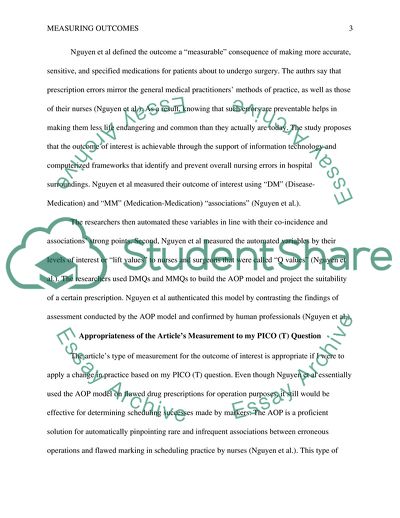Measuring Outcomes Assignment Example | Topics and Well Written Essays - 500 words - 1. https://studentshare.org/medical-science/1867193-measuring-the-outcome-of-interest
Measuring Outcomes Assignment Example | Topics and Well Written Essays - 500 Words - 1. https://studentshare.org/medical-science/1867193-measuring-the-outcome-of-interest.


